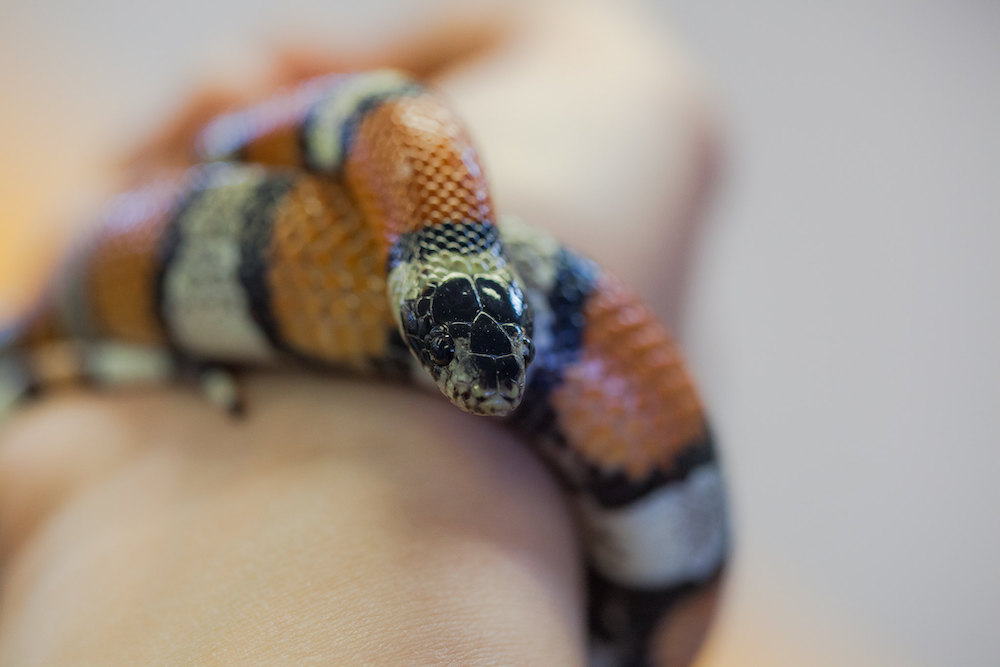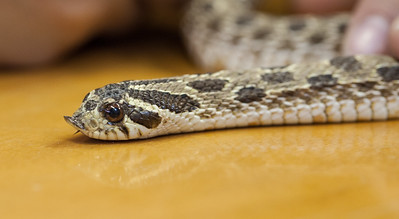
Welcome to Take It Outside! This week, we are getting to know our local reptiles and amphibians, collectively known as herptiles — or herps!
On Monday, we learned about rattlesnakes. Today, learn more about our nonvenomous snakes!
Upcoming Event:
Tune in for today’s Critter Chronicle video to meet Foxxy the Western Hognose Snake! PEEC staff member Ashleigh Lusher will introduce Foxxy via YouTube livestream from 11 – 11:15 AM and answer your questions in the live chat. Tune in here.
Blog Post:
Today on the blog, Garth Tietjen tells the story of a Sonoran gopher snake’s life on the Pajarito Plateau. Read his post here.
Craft:
Snakes are reptiles, a special class of animals with scales. Find out more about what makes a reptile unique.
Then, collect nature items, or things that remind you of different animals, to compare the outer coverings (feathers, scales, and fur) of birds, reptiles, and mammals. Find ideas here.
Outdoor Challenge:

Snakes are well known for their slithering! Learn more about the math and engineering behind slithering in this video from the National Science Foundation.
Then, go outside and observe animals in motion! If they move across a surface, do they hop or walk? If they walk, do they walk at a steady pace, or stop and go? Do they walk in a straight line, or zigzag? If they fly, do they flap their wings all the time, mostly soar, or flap-flap-flap-soar? If you’re lucky enough to spot a snake, does it lift part of its body off the ground as it moves?
Try to mimic some of the animal motions you see outside. Hop like a bird, slither like a snake, walk like an ant! Send us your observations by using the form below, emailing us, or commenting on social media!
Want to Learn More?
- Why do snakes stick their tongues out? Because it helps them to smell! Snakes stick their tongues out to pick up chemical particles. When a snake flicks its tongue back into its mouth, it touches something called the Jacobson’s Organ, which helps it to smell. They use this to find meals and pick up pheromones from potential mates! Learn more about the Jacobson’s organ here.
- Snakes shed their skins for a couple of reasons. One is to allow them to grow, and the other is to get rid of parasites. Learn more about why snakes shed their skins in this article from the Iowa Department of Natural Resources.
- The New Mexico Herpetological Society has a list of snakes found in New Mexico.
- The New Mexico State Extension Service has information for homeowners about snake biology and controlling snake habitat near your home.
Share Your Experience:
Tell us what you learn about our local reptiles and amphibians this week! We’d love to see your photos, too. Please send them to takeitoutside@peecnature.org or share them on Facebook or Instagram with the hashtag #peectakeitoutside.
On the final day of reptiles and amphibians week, we’ll learn more about amphibians — including local frogs! Check it out tomorrow!
